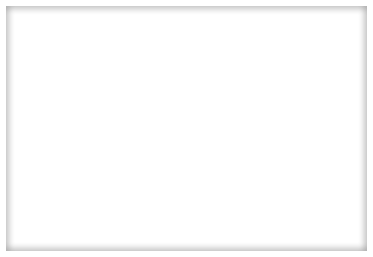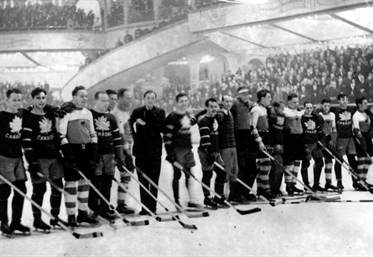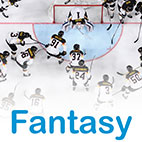When Worlds were travelling
When Worlds were travelling
1930 started in Chamonix, ended in Berlin

 Canada, represented by Toronto CCM, won the gold medal game against Germany at Berlin’s Sports Palace. Photo: Archive Birger Nordmark
Canada, represented by Toronto CCM, won the gold medal game against Germany at Berlin’s Sports Palace. Photo: Archive Birger Nordmark
While the 2017 IIHF Ice Hockey World Championship is the first coming out of a joint bid – although in 2012 and 2013 Finland and Sweden joined together as well after winning single bids – the first World Championship that took place in more than one country was the 1930 Worlds – the first ever one held outside of the Olympic Winter Games.
At the congress in 1929 the IIHF members decided to organize the first stand-alone World Championship and awarded the hosting to Chamonix, France. The Europeans didn’t want to wait every four years to see Canada play. And to make it truly global, Japan was invited to become the first Asian nation in an IIHF-sanctioned tournament. Some 12 of the 18 IIHF members eventually played at the 1930 Worlds.
However, games turned out to took place not only in Chamonix in the French Alps, but also in the Austrian capital of Vienna and in the German capital of Berlin. But it wasn’t initially planned like that.
It was on 27th January 1930 when the event was supposed to start at an open-air ice stadium in Chamonix, but due to exceptionally mild weather conditions with temperatures reaching +9°C, the first games were played only when frost came back four days later.
The conditions at the natural ice rink were simply too poor and quality deemed risky to let the teams play. Few fans in the world knew what was going on in Chamonix in an epoch without internet and social apps on mobile phones. Journalists from Germany complained that it took them three hours to get a phone connection to Frankfurt.
The LIHG – as the IIHF was called in those days – planned to move the tournament to Davos, Switzerland. On 30th January the vote was 6-5 for the relocation. But while the buses didn’t arrive in time, the frost did in order to make the natural ice rink ready.
After losing game days, the organizers had to improvise. There was no preliminary round. The teams had to battle for European glory in a knock-out tournament and the winner would face perennial favourite Canada for the world title.
On 31st January the event began in Chamonix with a knockout preliminary round that was won by France (4-1 vs. Belgium), Germany (4-2 vs. Great Britain) and Hungary (2-0 vs. Italy) while for the other three teams the tournament was over after just one game.
The tournament continued the day after with five more teams joining in for the second round that was virtually the quarter-finals minus Canada. The playoff brackets included Japan, which joined the IIHF just before the tournament. This was a team that consisted of medical students and ensured that there were teams from three continents at the World Championship.
Germany (4-1 vs. Hungary), Poland (5-0 vs. Japan), Austria (2-1 vs. France) and Switzerland (3-1 vs. Czechoslovakia) advanced to the next round on 1st February on an ice rink where the organizers tried to fill the holes with snow. For host France that was the end of the event. In front of 1,200 spectators, Hans Trauttenberg broke the tie and scored the game-winner for Austria.
Again, there was not much of a break for the teams as the tournament continued the day after. Germany defeated Poland, 3-1, thanks to two goals from Gustav Jaenecke, and Switzerland edged Austria, 2-1, with Albert Geromini’s game-winner to set up a German-Swiss clash for the title of the best European team (and a placement game between Austria and Poland).
But despite all art of improvisation, no more games could be played in Chamonix when the thaw returned. It was decided to continue at other venues.
Austria and Poland drove to the Austrian capital of Vienna to play for third place in Europe (and fourth worldwide) three days later after being ousted from the semi-finals. The Austrians made use of their home-ice advantage and won, 2-0.
One week after the semi-finals, on 9th February, Germany and Switzerland played it out for the European title at Berlin’s Sports Palace where artificial ice was produced. It was more than 1,100 kilometres away, compared to the 400 km air distance teams will travel between Cologne and Paris for the final round next week.
Geromini opened the scoring for Switzerland, but Jaenecke equalized in the second period and Erich Romer netted the game-winner for Germany in the third.
One day later, it was time for Toronto CCM, which represented Canada, to end their European tour with the World Championship’s gold-medal game against Germany.
The format might sound strange by today’s standards, but it was actually the first time an ice hockey world champion was determined outside of the Olympics. Before the 1930 Worlds there were just three world titles – at the Olympics in 1920, 1924, and 1928 – in addition to European Championships dating back to 1910. And each time the winner was Canada, in Antwerp, Chamonix, and St. Moritz.
Canada came to Berlin after suffering its first ever loss against a European team on 7th February in Vienna in an exhibition game against Austria, 1-0.
In the beginning it didn’t look good for the Canadians in Berlin. Der Eissport, the official magazine of the various German ice sports organizations, reported about the beginning: “In great style the Germans began the competition and after less than a minute, Rudi Ball put the disc – exemplarily passed by Jaenecke – into the Canadian net.”
Some 8,000 enthusiastic fans at the crowded arena went wild after the goal. But the Canadians responded, and the game got tougher. Alexander Park hit Jaenecke, who had scored nine goals in the tournament. Germany’s best player fell unluckily onto the ice and didn’t return.
Canada turned the game to lead 2-1 after one period en route to a 6-1 victory. Gordon Grant and Park scored two goals apiece, and Howard Armstrong and Joseph Griffin added the other markers for the team from Toronto.
It was the fourth gold medal for Canada in four world finals while the silver medal was the highest placement for Germany in international ice hockey, repeated only once, in 1953.
Paul Loicq, the IIHF’s President at that time, was the referee in the two final games in Berlin before the Belgian moved over to his presidential role when the medal ceremony was held at the arena’s ballroom.
It was definitely a different era of hockey compared to today’s sophisticated World Championships. And it was one of the last IIHF events played on natural ice.
Back to Overview
































































































